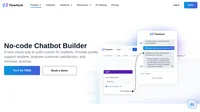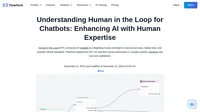To deepen our understanding of collaborative robots, it’s essential to delve into their origins and technological advancements. Cobots trace their roots back to the mid-1990s when the concept was developed at Northwestern University and General Motors. Their primary purpose was to create robots that could safely interact with humans. Unlike traditional robots, which are isolated due to safety concerns, cobots are designed with the human operator in mind, emphasizing safety and collaboration. The integration of advanced sensors, machine learning algorithms, and artificial intelligence allows cobots to adapt to dynamic environments, making them suitable for various applications beyond industrial settings.
Key Characteristics of Cobots
Safety Features
Cobots incorporate a multi-layered safety approach. Besides the physical attributes like soft edges, they utilize sophisticated technologies such as:
- Force Feedback Sensors: These sensors enable the cobot to detect even the slightest human touch, allowing it to halt operations immediately.
- Advanced Vision Systems: Leveraging cameras and LIDAR, cobots can map their surroundings in 3D, ensuring they avoid potential hazards.
Incorporating these safety measures aligns with international safety standards such as ISO/TS 15066, which outlines safety requirements for collaborative robot systems.
Ease of Programming
The user-friendly nature of cobots is made possible through intuitive software interfaces and programming paradigms:
- Graphical User Interfaces (GUIs): Many cobots come with touch-screen interfaces where users can visualize tasks before execution.
- Artificial Intelligence Integration: Modern cobots are equipped with AI-based learning capabilities, allowing them to learn from human demonstrations and improve over time.
These features make cobots accessible to a workforce with varying levels of technical expertise, democratizing automation across industries.
Flexibility and Mobility
Cobots’ mobility is augmented by their ability to integrate with autonomous mobile robots (AMRs), creating a versatile robotic workforce capable of executing tasks across different locations. This adaptability is crucial for industries with fluctuating demands, such as logistics and manufacturing.
Differences Between Cobots and Traditional Industrial Robots
The contrast between cobots and traditional robots extends beyond just interaction and safety:
- Deployment Time: Cobots can be deployed rapidly due to their plug-and-play nature, whereas traditional robots often require extensive setup and programming.
- Operational Efficiency: Cobots can be used in a variety of applications without the need for reconfiguration, making them ideal for small-batch production environments.
Applications of Cobots
In addition to the mentioned industries, cobots have found applications in:
- Agriculture: Assisting in tasks like harvesting and planting, where precision and adaptability are crucial.
- Retail: Helping with restocking shelves and managing inventory, improving customer service and operational efficiency.
Use Cases and Examples
- Assembly Line Assistance: Cobots can be integrated with IoT devices to streamline assembly processes, using real-time data to optimize operations.
- Quality Inspection: Through machine vision and AI, cobots can perform more complex inspections, identifying defects invisible to the naked eye.
Benefits of Cobots
The transformative benefits of cobots are evident in their ability to:
- Foster Innovation: By automating mundane tasks, human workers can focus on creative and strategic roles.
- Enhance Quality Control: Cobots provide consistent performance, reducing the risk of human error and improving product quality.
Limitations of Cobots
While cobots offer numerous advantages, they are not without limitations:
- Integration Challenges: Cobots must be seamlessly integrated into existing workflows and systems, which can be challenging for some organizations.
- Technical Limitations: Despite advances, cobots still face limitations in processing power and decision-making capabilities compared to human cognition.
Programming and Maintenance
Cobots’ design prioritizes minimal maintenance with features like:
- Predictive Maintenance: Using sensors and analytics, cobots can predict when maintenance is required, minimizing downtime.
- Modular Design: Many cobots feature modular components that can be easily replaced, reducing repair times.
Cost Considerations
The economic impact of cobots extends beyond initial costs. By improving efficiency and reducing labor costs, cobots provide significant long-term financial benefits to organizations. Their affordability makes them viable for both large corporations and small businesses, democratizing access to advanced robotics.
Understanding Human in the Loop for Chatbots: Enhancing AI with Human Expertise
Enhance AI with Human in the Loop chatbots. Boost accuracy, reduce bias, and improve user trust with FlowHunt's innovative solutions.



